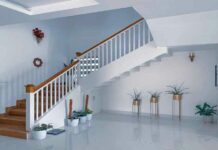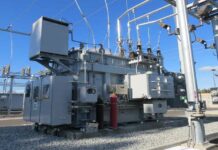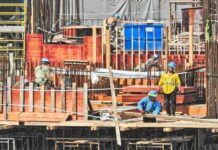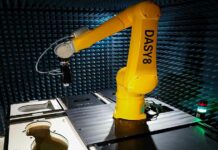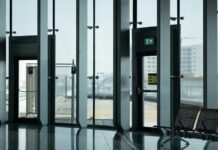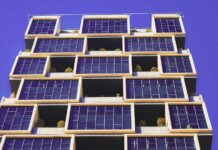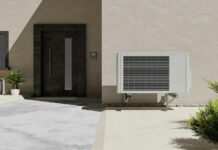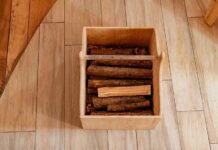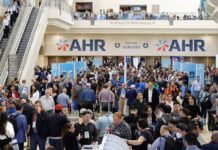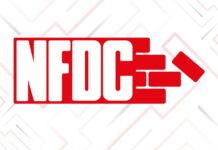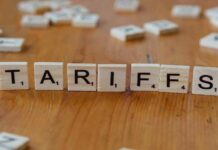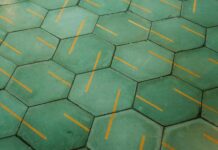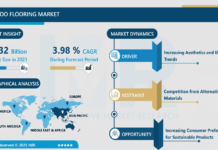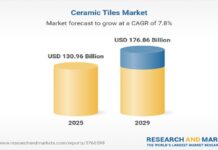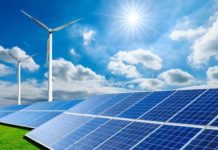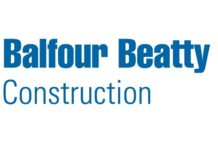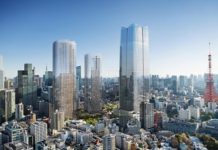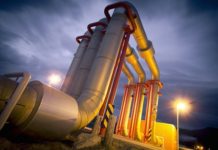Introduction
Have you ever seen a modern skyline and noticed the increasing number of green roofs dotting the horizon? The construction industry and roofing experts stand at a pivotal moment in its evolution toward sustainability.
Sustainable building certifications have become the gold standard for environmental responsibility in construction. LEED and BREEAM are the premier frameworks guiding builders toward eco-friendly practices.
A building’s roof does more than just protect from the elements. Modern roofing systems play a crucial role in achieving prestigious green building certifications.
Builders face mounting pressure to reduce their environmental impact. Smart roofing choices can distinguish between standard construction and award-winning sustainable design.
The certification path might seem complex, but the right roofing strategies can simplify it. Let’s explore how your next building project can achieve new heights in sustainability.
Your roofing choices affect more than just the top of your building. The right sustainable roofing system can transform your entire building’s environmental performance.
Breaking Down LEED and BREEAM
LEED: America’s Green Building Champion
Did you know the world’s most trusted green building certification started in America? The U.S. Green Building Council launched LEED to revolutionize construction standards.
LEED acts like your building’s environmental report card. Projects earn points for wise choices in energy use, water savings, and sustainable materials.
Picture a medal podium for buildings. Your project can achieve Certified (40-49 points), Silver (50-59 points), Gold (60-79 points), or the coveted Platinum status (80+ points).
The beauty of LEED lies in its flexibility. A building earns points through various strategies, such as water-efficient fixtures and locally sourced materials.
The system promotes practical solutions to environmental challenges. Each point represents a real step toward reducing your building’s carbon footprint.
BREEAM: The British Standard Goes Global
The Building Research Establishment (BRE) is a center of building science in the United Kingdom that developed BREEAM certification. BREEAM examines multiple aspects of a building and rates everything from energy use to occupant health.
According to this certification, your building can achieve five different ratings. The scale starts at Pass and climbs through Good, Very Good, Excellent, and Outstanding.
BREEAM rewards innovation in sustainable design. Each rating shows your commitment to environmental stewardship.
How Roofing Contributes to Both Standards
Your roof works harder than you might think. Modern roofing systems tackle multiple sustainability challenges at once.
A cool roof reflects sunlight to slash cooling costs. White or light-colored materials can reduce air conditioning needs by up to 15%.
- Stormwater management starts at the top. Your roof can capture rainwater for reuse or direct it to support local vegetation.
- The right materials boost your certification scores. Recycled metal roofing or sustainably sourced materials earn points in both systems.
- Heat retention matters more than ever. A well-insulated roof keeps warmth inside during winter and heat outside in summer.
- Durability plays a key role in sustainability. Long-lasting roofing materials reduce waste and replacement frequency.
Both LEED and BREEAM reward innovation in roofing design. Green roofs and solar-ready surfaces can earn bonus points.
Key Roofing Strategies That Boost Your Certification Score
Energy Efficiency and Thermal Performance
Remember those summer days when your air conditioner worked overtime? Cool roofs change that story completely. They act like a building’s sunscreen. Special materials and colors reflect up to 80% of sunlight away from your building. For example, white roofing membranes stay 50-60°F cooler than traditional dark roofs in peak summer.
If you choose solar-reflective coatings, they can boost your roof’s reflectivity by 30-40%. High-performance insulation works like a thermos for your building. The right materials keep indoor temperatures stable year-round.
Your roof’s thermal performance affects comfort and costs. Smart insulation choices earn points while reducing long-term operating expenses.
Think of insulation as an investment that pays daily returns. Better materials mean lower bills and higher certification scores. Modern insulation systems can reduce energy bills by up to 25% compared to standard solutions.
Sustainable and Recyclable Roofing Materials
The right roofing choices protect both people and the planet. Metal roofs are champions of sustainability. Aluminum and steel contain up to 95% recycled content—that’s a lot of rescued materials!
Recycled shingles start as yesterday’s waste and transform into tomorrow’s weather protection.
Sustainable composites blend durability with eco-friendly ingredients to create roofing magic. Your nose knows the difference in VOC-free materials. Low-emission roofing products keep the air clean, and your certification points high.
Non-toxic materials protect workers, occupants, and the environment, and all benefit from cleaner roofing choices.
The best sustainable materials often cost less over time. They last longer and need fewer replacements than traditional options. Each material choice adds up in your certification journey. Wise selections can boost your LEED or BREEAM score while protecting your budget.
Remember that old saying about cheap shoes? The same applies to roofing. Quality, sustainable materials pay for themselves through durability and performance.
Stormwater Management and Green Roofs
Your roof can become an urban oasis that solves this puzzle. Green roofs transform dead space into living ecosystems. Plants and soil capture up to 80% of rainfall that hits your roof.
A permeable roof system acts like a giant sponge. Multiple layers work together to absorb, filter, and control water flow. Drainage designs direct water to benefit your landscape instead of overwhelming sewers. LEED and BREEAM love these natural solutions. A well-designed green roof can earn you major points in water management categories.
The benefits stack up. Your green roof cuts cooling costs extend roof life and creates beautiful spaces. These spaces boost property value while scoring certification points. Who says buildings can’t improve the environment? Your roof can become part of the solution to urban water challenges.
Solar Roofing Integration
The sun provides enough energy in one hour to power Earth for a year. Your roof can tap into this incredible power source.
Modern solar solutions break old stereotypes. Sleek solar shingles blend seamlessly into your roof’s design. Solar shingles represent the future of roofing. These innovative materials protect your building while generating clean power.
LEED and BREEAM reward solar innovation. PV systems can earn you up to 10 extra points toward certification. Your roof becomes a silent power plant. Each square foot contributes to both energy independence and certification goals.
Traditional panels have evolved into architectural features. New designs complement your building’s aesthetics instead of competing with them.
The numbers tell an impressive story. A solar roof can cut your building’s energy costs by 50-75%.
Solar roofing offers the perfect blend of function and environmental responsibility. Developers have now considered solar integration since day one. This trend shows how green building practices continue to evolve.
Reflectivity and the Urban Heat Island Effect
Cities can feel like ovens in summer. Dark roofs across urban areas create heat islands that raise temperatures by up to 7°F. On the contrary, white or light-gray materials reflect up to 80% of sunlight.
Reflective roofs act like mirrors for sunlight. High-albedo materials bounce heat back into space instead of absorbing it.
Your roof choice affects the whole neighborhood. Superb roofing materials help create comfortable microclimates around buildings, and science proves impressive results. Light-colored roofs stay up to 50°F cooler than traditional dark surfaces.
Also, LEED rewards smart reflectivity choices. Your cool roof can earn crucial points in the heat island reduction category. On the other side, BREEAM takes notice of temperature impact. Buildings with high-albedo roofs score better in the pollution section.
The benefits reach beyond your building. Each cool roof contributes to a more comfortable and sustainable urban environment.
LEED vs. BREEAM: Which One is Right for You?
The choice between LEED and BREEAM affects your roofing strategy. Each system values different aspects of sustainable design.
LEED values immediate environmental impact, while BREEAM takes a longer view of sustainability. Your roof must prove its worth throughout its lifecycle.
Your certification goals shape roofing decisions. LEED requirements might prioritize reflective materials for fast energy savings. BREEAM projects demand deeper environmental thinking. Your roof should demonstrate long-term ecological benefits.
Flat roofs excel in both systems for different reasons. LEED values its solar potential, while BREEAM appreciates its biodiversity options. Sloped roofs offer unique advantages, too. Their natural drainage and ventilation properties score points in both certifications.
Material choices make or break your certification success. Metal roofs charm LEED with recycled content and BREEAM with durability.
Your roofing strategy should be guided by the local climate. What works in Seattle might fail in Phoenix. Experienced designers plan for both standards, and many roofing solutions can satisfy both simultaneously.
Conclusion
The path to sustainable certification starts at the top. Your roof serves as a cornerstone for LEED and BREEAM success.
Contemporary roofing solutions offer more than protection. Each feature contributes to your building’s environmental performance.
Your choices today shape tomorrow’s cities. Sustainable roofs create healthier spaces for people and the planet.
LEED and BREEAM guidelines transform sustainable roofing from complex to achievable. The roofing industry stands ready to help. New materials and technologies make certification goals more accessible than ever.
Property values reflect sustainable choices. Green certifications attract tenants and command premium rates. The question isn’t whether to choose sustainable roofing. The question is: which solutions will best serve your project?




